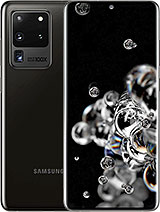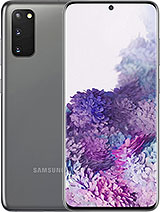Samsung Galaxy S20 vs S20 Plus vs S20 Ultra Review By PhoneArena
The Samsung Galaxy S series come in three flavors this year. The big galaxy has 20 ultra, that has the best own camera ever put on a phone and then the galaxy s, 20, plus a direct successor to last years, has 10 plus model and the galaxy s 20, which only makes one compromise. The lack of millimeter wave 5g yet still manages to cram an all the power of the series in a super compact form factor hello, Internet, first phone arena here, and I have been using and testing these three phones in the past few weeks, and it's time for an in-depth review. The galaxy s 20 series feature an aluminum frame and glass on both the back and the front, but their best design feature might actually be something that Samsung removed and that's the curved edges of the screen. The screen is now essentially flat, which makes for a better viewing experience, and you can fit a regular glass screen. Protector to Samsung has also taken care of the little details.
Remember that off-center USB port on the s10 series. It will stop you from buying the phone, but it was puzzling to see it on a flagship and yes, 20 series now finally have their USB port properly centered, and you already know that the 3.5 millimeter headphone jack is gone and there is no adapter in the box. Instead, you get a pair of USB-C headphones. Also, there is no longer physical bigamy key this one we're glad it's gone. It made no sense on the SM series last year, where one would often press it accidentally instead of the power key.
The power and the volume buttons are on the right side and if you click it with a good amount of travel, but while many phones get those design basics right these days, not many quite have the incredible display quality that you get here. All three Galaxy S 20 series come with the latest Super AMOLED technology, with vibrant, rich colors, great viewing angles and are just all around the joy by default. They're set to the vivid screen mode where colors really pop, but you can go into display settings and switch to the natural color mode to get them more toned down and neutral. The big new feature is, without a doubt, the Hamilton 20 Hertz refresh rate. We have made a small blind test by showing it to a bunch of people and ever was impressed by how smooth made everything look even, and they couldn't point out the technical reason.
Why? Interestingly, Samsung, however, has decided to have the phones running at 60 Hertz by default, and you need to go into the screen settings to change to 120 Hertz. The reason for that is because the hundred and twenty Hertz really takes a toll on battery life, but more on that a bit later and why we love the colors of the screens of the s20 series. There is one thing that Samsung has left behind, and that is the fingerprint scanner. The fingerprint reader is built under the screen, and it uses ultrasonic technology, but it hasn't changed at all from the S Pen series and the null pen. It does work, but it is much slower than optical fingerprint scanners use with most other phones, and you often get miss readings for something that he's used often hundreds of times in a day it can quickly get frustrating, and this is our biggest gripe with the s20 series.
As for the rest, we really don't need to spend much time talking about performance. You have the latest and most powerful chips here, v snapdragon 865. If you live in the states and the slightly subpar Enos 994 most other countries, you also get either 12 gigabytes or 16 gigabytes of RAM on the ultra, which is more than many laptops. All of these phones are absolutely amazing for mobile gaming, whether you play Pusey or for tonight, yes, 20 will handle those games like a champ and in terms of storage. You get 128 gigabytes of fast EFS, 3.0 storage, plus you still have a micro SD card slot, so you can use your own card to get even more storage on board. There is one pleasant surprise that we wanted to mention here and that's the loudspeaker and yes, 20 series.
It's a big improvement even when compared to the note 10 plus here you get a much richer louder. Sound. There is a bottom firing loudspeaker right here and sound is also coming from the earpiece at the top, and it's really impressive. Overall for a phone speaker and as for the interface, the s20 series features the latest version of Samsung's one UI, and it has not changed much at all compared to the Galaxy S 10 or no 10 same visual style. Same big icons seem everything but might change what already works right.
You do have a new Samsung, quick share function that allows superfast transfers of large files and is really cool, but it only works between Galaxy phones. Okay, let's stop cameras. Samsung itself admits that cameras are the main reason that is driving people to buy expensive phones like these, and it is to really break the mold with the s20 series. Cameras are also the one area where you will notice the most difference between each model in the series. Yes, 20 in particular gives you the best zoom quality, while the s 20 and yes, 20, plus right here, kick, better zoom than other rivals, but not as good as on the ultra, and the reason for that is that the ultra has a real telephoto lens right here: a folded periscope lens with 4 times native magnification, and it makes images zoomed 4 times or further spotless and good-looking.
And then you have the s 20 and the s 20, plus that don't even have a telephoto lens at all. They use a secondary Lance coupled with a 64 megapixel sensor and use all those pixels for digital zoom. They still do a very good job, just not quite as good as the ultra, and then you also have the main cameras. Yes, 20 outre comes with a gigantic under, an 8 megapixel main camera, all the s20 and the plus feature 12 megapixel main shooter. You would think that this 108 megapixel shooter would really be something different.
The reality, however, it is set to shoot.12 megapixel photos that combine 9 individual pixels into one. You can also shoot 108 megapixel photos, but we honestly don't recommend that as a single image can take more than 30 megabytes of space, so big, you won't even be able to share it in social media. The only reason why you would want to shoot 108 megapixel photos is, if you're planning to print those photos on a large canvas which probably won't happen very often. But in that case please do and when you compare the 12 megapixel shots from the ultra and then to the other 2. There is very little actual difference.
Colors are similar. The amount of detail is similar, so we don't think you are missing out much in low-light. The s20 series are all capable of capturing excellent photos. We have the tiny blue icon in the bottom right on the camera for Samsung's scene optimizer, and now it will automatically turn on night mode when sees fit. This means you don't have to explicitly go and manually select night mode, every single time, which is great.
If you have ever do that, you'll notice that when using the manual night mode, the phone will take much longer to capture each picture, sometimes seven or eight seconds, and that photo will have a bit more light than give one with automatic night mode. But it's almost never worth the trouble and the automatic mode will do just fine. Most of the time you have been hearing about a number of bugs for the camera on all three phones, and unfortunately there are some. None of them are deal-breakers. The most annoying one in our experience is with the front camera, which often times inexplicably blurs out parts of the image well other times the photo looks perfectly sharp, it's just unpredictable and when you're recording video, you also sometimes lose the focus and then have it back.
Samsung has already started fixing some of those with updates, and we hope it fixes all of them soon. As for video, the new feature here is 8k. Video recording 8k on its own is not a gimmick, but we're also not sure if it's ready for prime time here's, why? First of all 8k files are huge. A minute and a half of recording can take up to one gigabyte of space. Second 8k doesn't even playback smoothly on the phone itself and third, there are very few TVs and monitors that support the 8k video resolution.
If, however, you happen to be in some truly amazing place, and you're planning on creating a video for the world to watch and not just shooting a video at a birthday party or whatever, please do use the APA option, it is worth it, but for all else, stick with 4k or even 1080p. Those formats use a lot less space and video stabilization will actually work on them, unlike with 8k, and you should also know that in 4k you can also zoom up to 20 times and video really impressive if you're trying to capture something far, far away. Let's also say a few about 5 g, all 3s 20 films have 5g support and markets where there is a 5g Network, but the smaller s.20 is the only one that doesn't have support for millimeter-wave. That's the type of 5g that is only available in individual small spots, but has those superfast speeds? We don't think that's something that you will miss, but still you should know about that when three phones support the more widespread type of 5g called sub 6 because it uses frequencies below the 6 gigahertz range. Finally, let's also address battery life.
We have a five thousand William hour battery in the s20 ultra a 4500 William hour battery on the s 20, plus in a four thousand William hour battery on the s 20, that's a big change from the s 10 series, and we have some good and some bad news. The good news is that if you use the phones at 60 Hertz, they will last more than all previous Galaxy phones. The bad news is that the moment you switch to 120 Hertz battery life takes a nosedive and goals from excellent to just average your choice. We have tested all three phones a couple of times and get the following battery results. As you can see, the s20 ultra is the one least affected by the new condition: 20 Hertz option, but even on that battery life goes down by some 20% on the s 20 plus, and the smaller s 20 battery life drums by about a third when you switch to 120 Hertz and on the charging Front, all three phones come with a 25 watts fast charging adapter.
Unlike the charger on the s, stand, it used Qualcomm proprietary, quick charge option. This new charger uses a USB, C connection on the break and features the universal USB power delivery standard. This is great because you can use the same fast charger for your Galaxy as always get the benefit of the fast speeds. If you charge up an iPhone or say a Google FIFA with this st. charger, but, most importantly, it's great because it's very fast while it used to take around an hour and 40 minutes to fully charge up the Galaxy S 10 series.
Yes, 20 phones charged fully in just one hour. You also get more than 50% charge in just half an hour, so quick top-up at lunchtime is all you need. The s20 series also support fast wireless charging at 15 watt speeds. You would need to buy the wireless charger separately, but if you have it, you also see your phone's fully charged in an hour and 40 minutes, which is impressively quick for a wireless charge. This all finally prices, the smallest 20 cost $1,000.
The S 20 plus, is priced at 1200 10 years, 2003 costs $1,400. These are the best, but also the most expensive phone Samsung has ever made, and are they worth upgrading from the s10 series? Now that's a tough one, and the answer is only if you absolutely insist on having that zoom camera and want to use the hundred 24 it's option, despite its effect on battery life, for all, it's worth, vs 20 series once again ? how great the phones, the Galaxy S 10 already were, and now that they are available at lower prices. We wouldn't blame people who would consider them a better deal and that guy's runs up our review of the s.20 series, a trio of excellent phones, launched at a very bad time for the world. G already have the S 20 series, there's not much thing about them in the comments we, as always wish you to be well stay healthy and safe and enjoy the luxury of technology that helps us get through these tough times. My name is Vic.
This is phone arena, and I'll see you in the next one. You.
Source : PhoneArena



























